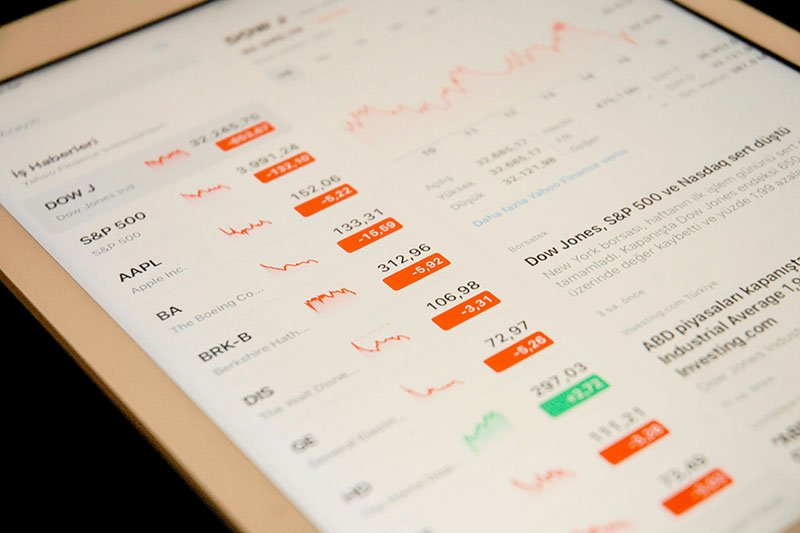
The recent “Trump Tariffs” are a powerful reminder that markets can become volatile during times of uncertainty. Around the world, markets have been fluctuating widely as investors struggle to understand an escalating trade war, particularly between the US and China.
As investors, what should we do when markets are uncertain – or even appear out of control? In the article, our Burnley financial advisers offer a gentle reminder that volatility is inevitable in investing. Although this can spark anxiety, it is important not to rush to hasty decisions.
Below, we explain why it pays to stay true to a long-term strategy – and how to do it.
Understanding Market Volatility
Volatility refers to the amount of price movement in a stock, index or derivative. It provides an important indicator of the “risk level” involved with investing in that specific investment.
For instance, a highly volatile investment might regularly swing widely in price (e.g. over 3%). Many cryptocurrencies fall into this category.
By contrast, a less volatile investment will usually exhibit relatively stable returns and less price fluctuation. An example might be money market funds (MMFs) – a type of short-term, high-quality debt instrument.
Whilst it is possible to limit volatility in a portfolio, volatility is an inevitable part of investing. Check any major index and you’ll often see large swings, such as the FTSE 100 and FTSE 250 (in the UK), the S&P 500 and the NASDAQ (US), and the Nikkei 225 (Japan).
As such, one key way to manage volatility is to accept it as a natural part of investing. The question is not how to avoid volatility, but how you will manage it when it arrives.
Common Investor Traps
Every investor is vulnerable to emotional decision-making, even experienced ones. However, “retail” investors (ordinary people) can often be more susceptible to fear, greed and other powerful investor biases during turbulent times.
For instance, after reading an alarming headline about an “Almighty plunge” in stock prices, an investor may be tempted to “panic-sell” certain shares to avoid anticipated losses. However, this can often backfire – serving to crystallise losses during a “dip”, causing the investor to miss out on the recovery later when investors calm down.
This relates to another common investor trap – trying to time the markets. This refers to jumping in and out of the market (i.e. buying and selling assets) in search of “safe” times. However, the result is often missing rebounds and possibly missing out on the best days of the market – which could erode an investor’s returns significantly over the long-term.
The “best days” often occur during periods of volatility, but they are difficult (if not impossible) to predict consistently – making a strong case for staying invested.
How to Navigate Volatility
The first key step is to be honest with yourself about how much volatility you are prepared to withstand. A financial adviser can be very helpful here, guiding you through the key questions you should ask yourself (e.g. “If your portfolio fell by 20% tomorrow, how could you react?”).
It is also vital to have a well-constructed financial plan which accounts for the inevitability of market turbulence. An investor who bases their portfolio choices on long-term goals (e.g. retirement, home buying or education funding), they are less likely to be derailed by short-term volatility. It is easier to accept volatility as part of the “investment journey”.
Volatility can shift your portfolio’s asset allocation. For instance, if equities drop significantly in a sudden “bear market”, their weight in your portfolio may decrease below target levels. This is where a financial adviser can add a lot of value, helping you with periodic rebalancing (selling overperforming assets and buying underperforming ones) to stay aligned with your desired risk level. This is a wiser and more disciplined way to “buy low and sell high.”
When uncertainty rises, quality comes into sharper focus. Speak with an adviser about how you can concentrate your equity investments on companies and funds with strong balance sheets, proven business models and good governance. If you want your portfolio to produce an income, look for consistent dividend payers and businesses with a history of weathering downturns.
Invitation
It helps to review your financial plan regularly. However, avoid making drastic changes based solely on market noise. Investing is a marathon, not a sprint.
If you want to ensure you’re taking the right steps to safeguard your financial future, please get in touch. We’d love to discuss your goals with you!
Please note:
Your capital is at risk. Investments can go down as well as up. Past performance is not indicative of future results. Tax treatment depends on individual circumstances and may change. This content is for information only and not investment advice. Any decision to invest is the reader’s own. Diversification is key to managing risk. Market volatility affects investment values. Inflation erodes savings. Liquidity risks may prevent quick access to funds.

